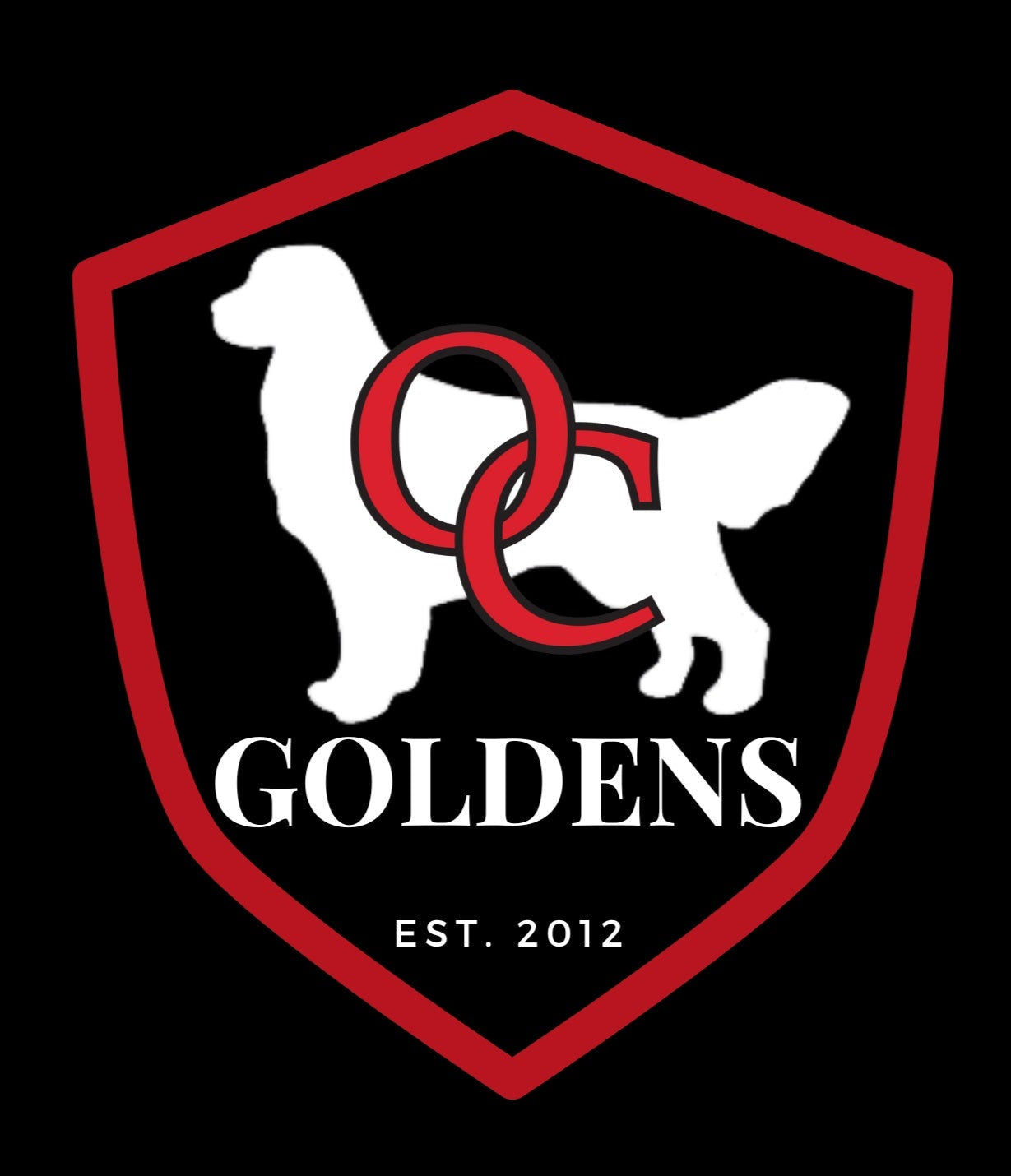FCI vs. OFA (Understanding The Testing)
HIP TESTING DIFERENCES EXPLAINED
When it comes to ensuring the health and well-being of your beloved Golden Retriever, hip and elbow health testing is crucial. But with different testing organizations like the FCI and OFA, how do you know which one to choose? Let's delve into the differences between the two to help you make an informed decision.
What is FCI Health Testing?
The Fédération Cynologique Internationale (FCI) is an international canine organization that sets standards for dog breeds, including health testing protocols. FCI health testing for Golden Retrievers typically includes hip and elbow evaluations to assess for dysplasia and other joint issues.
What is OFA Health Testing?
The Orthopedic Foundation for Animals (OFA) is a well-known organization in the United States that focuses on promoting the health and welfare of companion animals. OFA health testing for Golden Retrievers also involves hip and elbow evaluations to screen for dysplasia and other orthopedic conditions.
Key Differences Between FCI and OFA Testing
One significant difference between FCI and OFA testing is the evaluation process. FCI utilizes a scoring system based on radiographic images, while OFA requires submission of these images for evaluation by board-certified veterinary radiologists.
Additionally, the age at which testing is recommended may vary between the two organizations. While both FCI and OFA recommend testing for hip and elbow health at a young age, the specific age requirements may differ.
Which Testing Organization Should You Choose?
Ultimately, the decision between FCI and OFA health testing may depend on your location and breeding goals. If you are located in Europe or follow FCI breeding standards, FCI testing may be the preferred option. On the other hand, if you are in the United States or prefer the OFA evaluation process.
Regardless of the organization you choose, prioritizing hip and elbow health testing for your Golden Retriever is essential for maintaining the breed's overall well-being and longevity.
Equivalence of FCI and OFA scores
While a direct, one-to-one comparison is difficult, here is a general guide to how the grades are roughly correlated:
- FCI Grade A is roughly equivalent to OFA Excellent.
- FCI Grade B is roughly equivalent to OFA Good or Fair.
- FCI Grade C is roughly equivalent to OFA Borderline Mild Dysplasia.
- FCI Grades D and E are roughly equivalent to OFA Moderate and Severe Dysplasia, respectively.

ELBOW TESTING DIFERENCES EXPLAINED
When it comes to evaluating the health of a dog's elbows, two common systems are often used: FCI (Fédération Cynologique Internationale) and OFA (Orthopedic Foundation for Animals). But what are the differences between these two methods? Let's take a closer look at FCI vs. OFA elbows.
What is FCI Elbows?
The FCI system is an international standard used to evaluate the elbow joints of dogs. It involves a radiographic examination to assess the health of the elbow joint, looking for signs of dysplasia or other abnormalities. The FCI grading scale ranges from 0 (no signs of dysplasia) to 3 (severe dysplasia).
What is OFA Elbows?
The OFA system, on the other hand, is a screening program developed by the Orthopedic Foundation for Animals. It also uses radiographic evaluation to assess the elbow joints of dogs for dysplasia. The OFA grading scale ranges from normal to dysplastic, with additional categories for borderline and inconclusive results.
Key Differences
One of the main differences between FCI and OFA elbows is the grading scale used. While both systems aim to assess the health of the elbow joint, the grading criteria and categories may vary slightly between FCI and OFA. Additionally, the interpretation of results and recommendations for breeding may differ between the two systems.
It's important to note that both FCI and OFA elbows are valuable tools for breeders and veterinarians to evaluate the health of a dog's elbows. Each system has its own strengths and limitations, so it's essential to consider the specific requirements of your breed or region when choosing which system to use.
Conclusion
In conclusion, the choice between FCI and OFA elbows ultimately depends on your specific needs and preferences. Both systems provide valuable information about the health of a dog's elbows, helping to ensure the overall well-being of the animal.
FCI Elbow Grading:
- ED 0: Normal elbows, no signs of dysplasia.
- ED 1: Mild dysplasia with minor bone irregularities.
- ED 2: Moderate dysplasia with visible joint changes and potential arthritis.
- ED 3: Severe dysplasia with major malformation and arthritis.
- Age Requirement: Dogs must be at least 12 months old for the final evaluation.
- Geographic Use: Used in many countries outside the US, including in Europe.
OFA Elbow Grading
- Normal: No signs of elbow dysplasia.
- Grade I, II, or III: Mild, moderate, or severe elbow dysplasia, respectively.
- Age Requirement: Dogs must be at least two years old for an official certification.
- Geographic Use: Primarily used in the United States.






